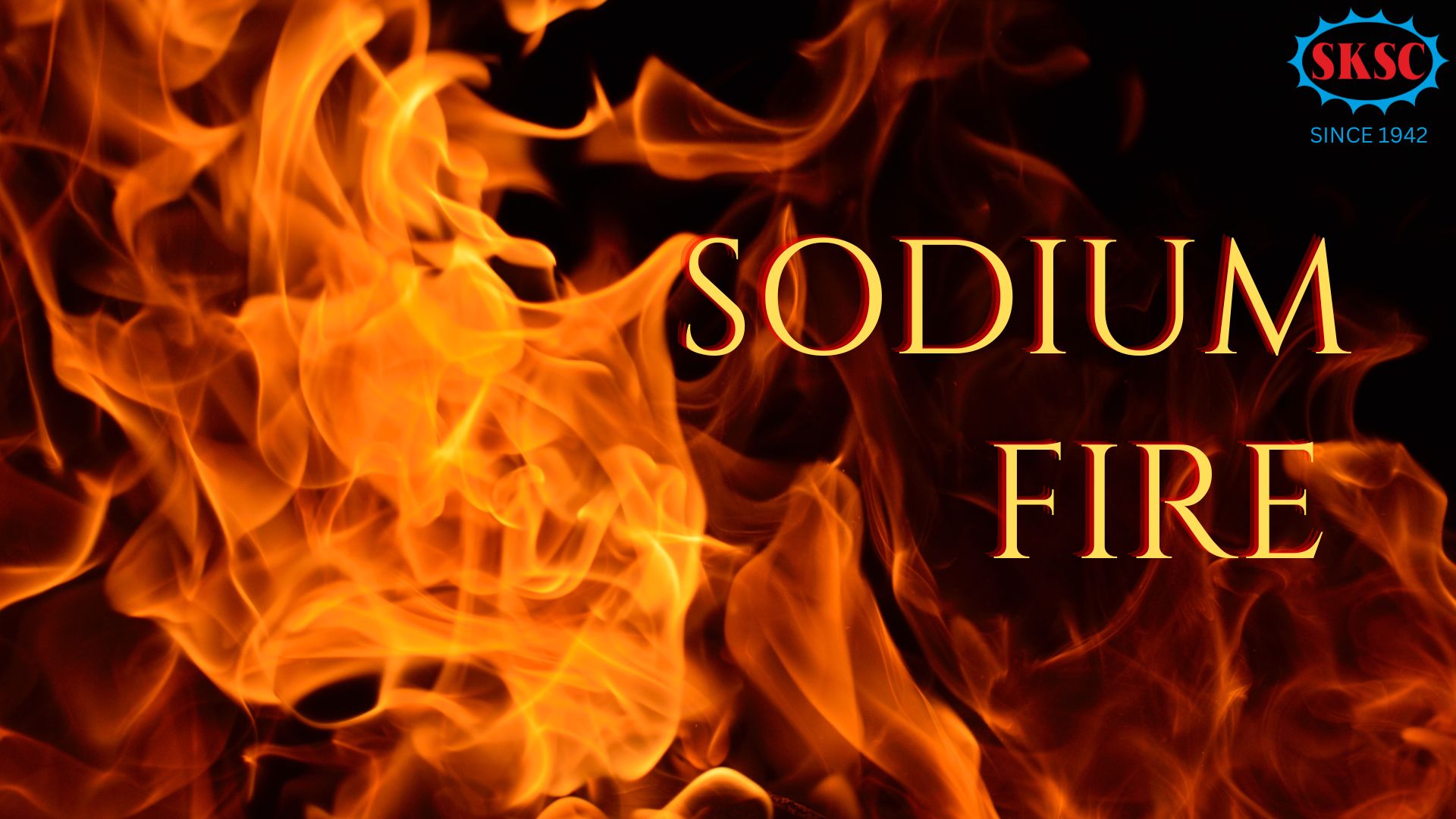
Sodium Fire…What is it??
Experiments with columnar flow sodium fire on bare concrete surfaces and on surfaces protected by stainless-steel plates were carried out in an open space. The characteristics of the heat flow field formed and the typical effects that sodium fire has on concrete properties
- There was a significant difference in combustion characteristics between the case where liquid sodium is sprayed vertically down from the nozzle directly onto bare concrete and when steel plate is laid on the concrete surface. The high-temperature burning of liquid sodium is significantly more severe when it is sprayed directly on the bare concrete surface. The local explosion and cracking of small concrete fragments along with the splashing of liquid sodium are also present. In real engineering projects, proper attention should be paid and preventive measures should be taken against the spreading concrete fragments carrying the liquid sodium that create new fire spots
- The direct impact of liquid sodium to the concrete surface dramatically increased its burning rate, increased its fuel consumption in the same time, increased combustion efficiency, and caused more damage and destructive force. For the same quantity of liquid sodium used, the burning time on bare concrete surface decreased by 72.3 % compared to the burning time on steel plate surface.
- When liquid sodium is directly applied to the concrete surface, the maximum fire temperature in the area above the concrete sample increases significantly. The range of high temperature impact also increases significantly. Furthermore, the time it takes for the corresponding space temperature to rise to the highest temperature lags behind the corresponding effect of the indirect interaction of liquid sodium with concrete.
- The internal temperature distribution of the concrete samples used in this experiment was not homogeneous. Furthermore, due to the heat transfer resistance of concrete at a specific depth inside the sample, the temperature change is clearly delayed and the temperature distribution is more difficult for homogenization. The temperature difference between the top and bottom layers corresponding to the measured point with time decreased exponentially under heat conduction after a rapid temperature increase. Also, due to the relatively high thermal resistance of the concrete, a second impact of a tiny amount of liquid sodium does not significantly influence the temperature change within the concrete
- Direct contact with liquid sodium produced larger pore sizes and distribution densities on the concrete surface and more corner blocks. Direct contact with liquid sodium significantly increased the extent of the loosening effect on the concrete structure compared to the effects of sodium fire through heat conduction on the steel plate. Even if a steel plate isolates the liquid sodium, if the plate cannot effectively prevent the transfer of heat to the concrete surface it will still affect the penetration resistance of concrete. Compared to indirect contact, the erosion caused by sodium fire, combined with the effects of adhering combustible products, increased the rate of water absorption on the concrete surface by over 70%. However, the water absorption at the depth of the concrete center was more influenced by the duration of high temperature at the surface
S.K.S.C.NADARAJAN & BROR.
Salt company since 1942
Tuticorin Salt | crystal salt | crushed salt | relish freeflow salt | fine salt | coarse salt | size salt | Salt supplier | Kerala salt supplier | South indian salt export | South India salt company | thoothukudi saltern | Tuticorin saltern | deicing salt exporter | deicing salt tuticorin | Thoothukudi salt exporter | Thoothukudi traditional salt | Sea salt tuticorin | Sea salt Thoothukudi | Thoothukudi salt | salt exporter tuticorin | salt Thoothukudi | SKSC salt | India old salt company | Salt company India | Salt company tamil nadu | Salt company Tuticorin | Tamil nadu Salt | India Salt | powder salt | natural salt india
